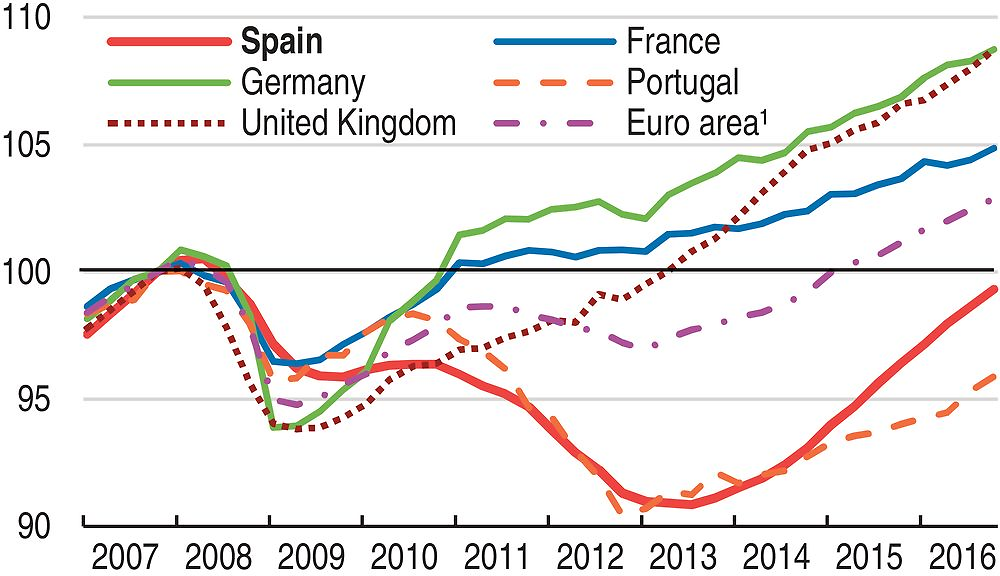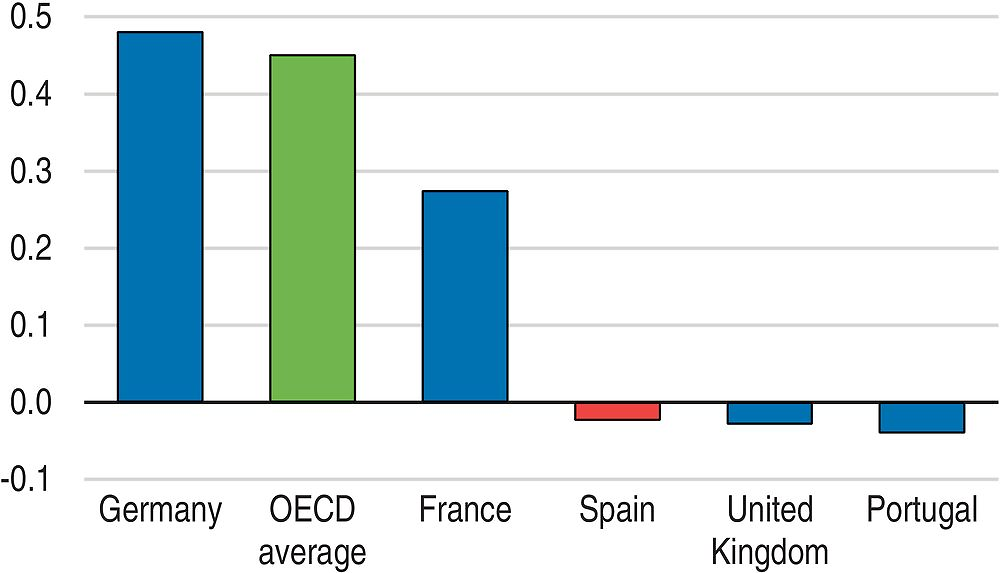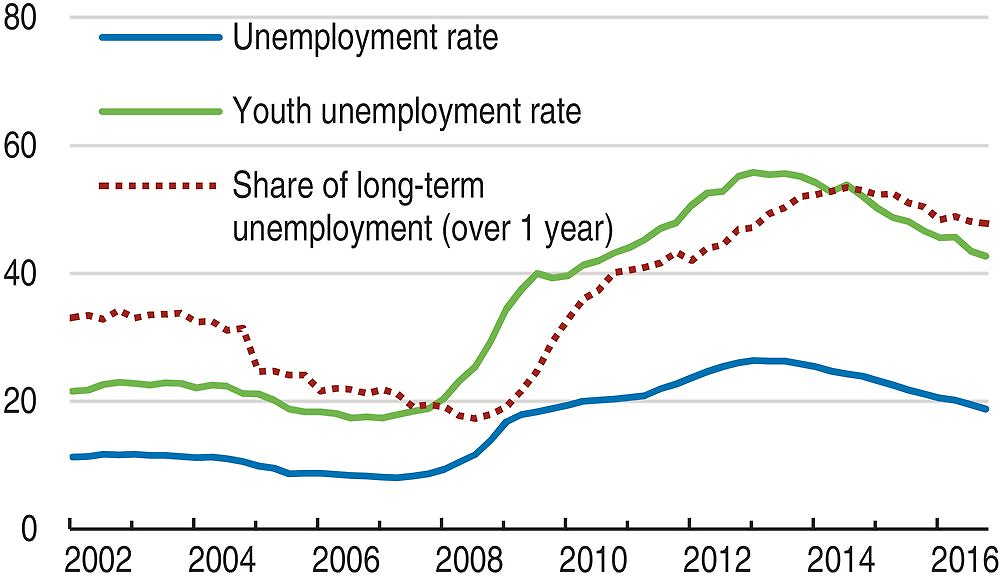Executive summary
The recovery is underway but making growth more inclusive remains a challenge

← 1. Euro area member countries that are also members of the OECD (16 countries).
Source: OECD (2017), OECD Economic Outlook: Statistics and Projections (database), March.
Spain is enjoying a robust recovery from a deep recession, with GDP growth averaging 2.5% over the past three years. A wide range of structural reforms has contributed to sustainable rises in living standards. Highly accommodative euro area monetary policy, low oil prices and, more recently, expansionary fiscal policy have all supported domestic demand. Exports have been a particular bright spot, as Spain has resisted the slowdown in global export growth. However, raising well-being and GDP per capita, particularly via productivity increases, and making growth more inclusive remains a challenge.
Fostering innovative business investment is crucial to unlock productivity growth

Source: OECD (2016), “OECD Economic Outlook No. 100, Volume 2016 Issue 2”, OECD Economic Outlook: Statistics and Projections (database), November.
Spain has long suffered from very low productivity growth, which has restrained increases in living standards. Misallocation of capital towards low productivity firms and underinvestment in innovation have dragged down productivity, although more recently capital allocation has been improving. Policies to foster a better allocation of capital and higher productivity include reducing regulatory barriers in product markets that are holding back competition, encouraging higher investment in R&D and innovation and ensuring that capital goes to a wider set of innovative firms. Reducing entry barriers and improving framework conditions would also help to foster green investment.
Reducing unemployment and improving job quality can make growth more inclusive

Source: OECD (2017), OECD Employment and Labour Market Statistics (database), February and Eurostat (2017), “Employment and unemployment (Labour Force Survey)”, Eurostat Database, February.
The unemployment rate is gradually falling down thanks to stronger growth, but it remains very high, particularly among the young and long-term unemployed. The high share of long-term unemployed risks loss of skills, disaffection and alienation. Poverty has also risen, mainly due to lack of quality jobs that provide enough hours of paid work to support decent incomes. Part of the answer is continued strong economic growth, but strengthening training and job placement and better minimum income support are crucial.
